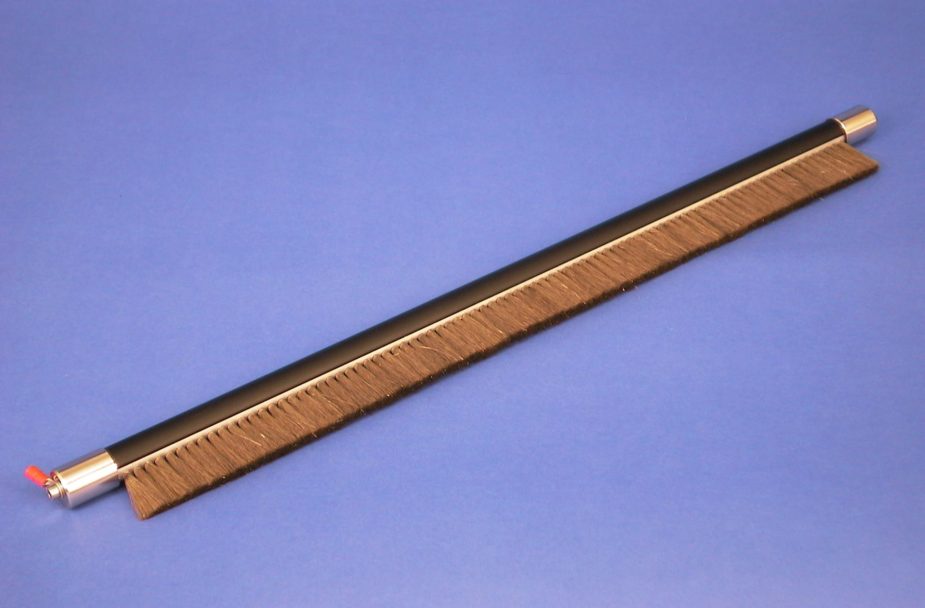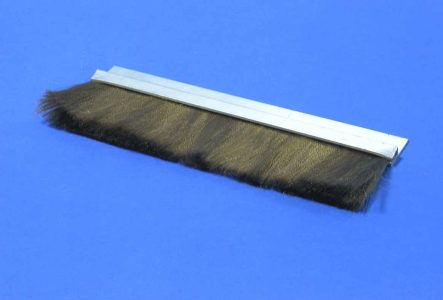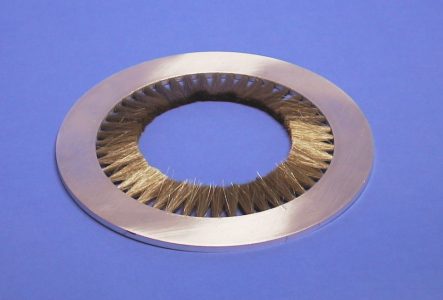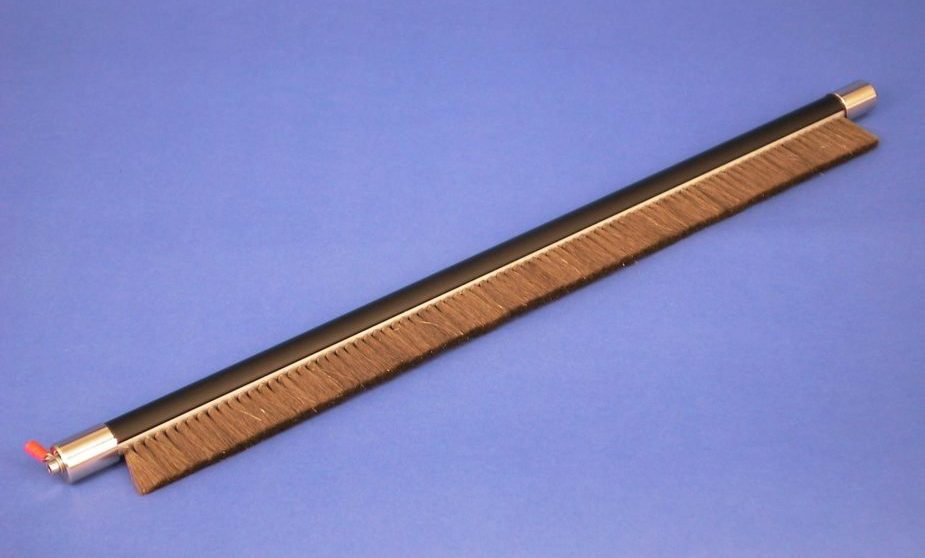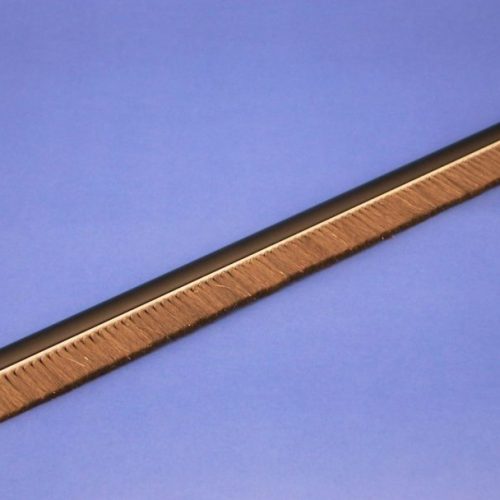Antistatic punched brushes
Punched brushes
antistatic
Generalities
Often in production processes that handle non-conductive films or workpieces, an electrostatic charge is induced that then prevents the work cycle from running properly. In such cases, antistatic brushes can be used to eliminate surface charge. For example, this can be useful to remove dust from a film or to drain a surface before painting, avoiding defects on the final product.
The basis of operation is the ‘tip effect’. If the filament is electrically conductive, each end of it is capable of attracting charges from the surface to be treated. It is then necessary to ground the brush body, which is also conductive, to keep the potential of the discharge system at zero. The filament is therefore essential to the efficiency of the anti-static brush. It must be conductive and very thin, so that there are many discharge points. We mainly use Thunderon, which has a number of advantages over the carbon fibre that is traditionally used. Sometimes other filaments are used, e.g. at high temperatures very fine brass is used. The most efficient condition is achieved by leaving a distance of about 2 mm between the filament and the surface.
However, by using Thunderon, it is possible to act directly on the workpiece and also achieve a brushing effect! Compared to carbon fibre, Thunderon has several advantages:
- carbon fibre has no texture, whereas the Thunderon can brush the parts;
- by mixing Thunderon and nylon, any desired hardness can be achieved;
- while carbon fibre brushes are only available in linear form, with the Thunderon it is possible to build brushes in any shape, even rollers.
Our standard, called SAB-1000, is D=20, H=27 and L=1000. Other L sizes can be supplied to order. SAB-1000 is a brush that, due to the materials used, the accuracy of manufacture and the finish, is especially suitable for use in high-tech plants where excellent discharge efficiency is required. For other less complex cases, we offer the SAT-1000, in which the filament is still Thunderon and the brush body consists of a 5×30 mm aluminium strip L=1000.
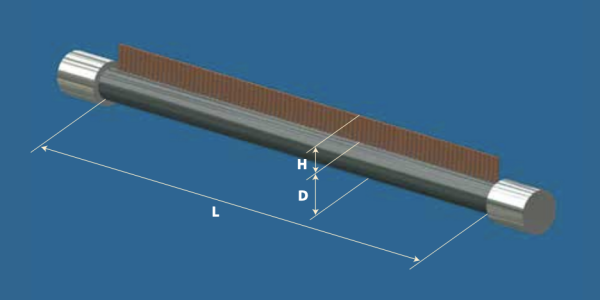
Videos and images
GALLERY
Do you want to request an offer?
Are you interested in receiving more information and being contacted by one of our specialized operators?
Request your offer now

Do you want to request an offer?
Are you interested in receiving more information and being contacted by one of our specialized operators?
Request your offer now
Frequently asked questions
What is the advantage of using a brush instead of another deformable object?
The special feature of the brush is that the working surface consists of millions of individual elements, which are the ends of individual filaments.
This gives the brush an adaptability that no other element, however deformable, can have.
How much must the brush interfere with the workpiece?
It depends on various factors. In a nutshell, it can be said that 2 mm is a good compromise. The important thing is that the brush filaments work ‘on the tip’ and not on the side.
Can a bundle of filament be detached from the brush body?
Depending on the materials used and the dimensions, there is a limiting tensile load that an individual bundle can withstand.
Beyond this limit, the bundle comes off, so the brush must be calculated according to use. This limit can be greatly increased by constructing ‘sewn’ or ‘tied’ brushes by hand, where instead of a single anchoring element, a continuous steel wire is placed.
Is a punched brush or a strip cheaper?
There is no single answer. Speaking of e.g. cylindrical brushes, the strip brush is generally cheaper when the dimensions are large (e.g. over one metre in length). For small dimensions, punched brushes are certainly more suitable and convenient.
Is it possible for a single filament to slip out of the bundle and contaminate the product?
This can only happen if the brush has a manufacturing defect, like any other type of object (e.g. a roller made of silicone flakes, one of which is defective and breaks).
When it is important that no contamination occurs, synthetic (not natural) fibres with a diameter greater than or equal to 0.15 mm should be used.
What softness or hardness of brush can I achieve?
Practically all degrees of hardness are possible, from very soft to very hard. In fact, hardness is a combination of the filament diameter, its free length and the density of the bundles.
Is it possible to have a certified 'food grade' brush?
Of course, we can provide FDA or FOOD GRADE certification and filament traceability.
Is it possible to have an ATEX-certified brush?
Unfortunately not, as it is the machine + brush assembly that needs to be ATEX certified, not the brush alone.
However, it is possible to supply the materials that the certifier requires, e.g. conductive bases, conductive filaments, etc.
Is it possible to 'regenerate' a worn-out brush?
Generally speaking, it is possible, but one has to assess whether it is cost-effective, which is not always the case. In addition, in the case of a punched brush, it is inadvisable to regenerate the brush more than twice, so as not to reduce the tightness of the bundles.

